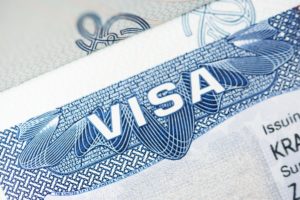Understanding the H-2B Visa | Q & A Session with Abeer | Part 1

We recently managed to wrestle a couple of hours of time out of Abeer’s busy schedule to spend time discussing the H-2B Visa. This is an employment based visa program which allows US employers to hire foreign workers to fill temporary, seasonal, and peak load positions when US workers are not available. This program has tremendous potential to benefit US employers, however many of the companies who could most benefit from this program aren’t aware of how it works or that it even exists. This series of blog posts will be dedicated to providing answers to the most commonly asked questions about the H-2B Visa.
How long has the H-2B visa program been around?
The H-2B Visa has been around since 1986. It’s the result of business proponents in Congress examining the needs of the economy and recognizing something that business owners desperately needed, human capital. What I mean by that is that there are several business industries at the forefront of the American economy that are always struggling to find temporary workers to meet the seasonal or peak load demands of their business. Congress introduced this plan as a way for American businesses to look beyond our borders to find qualified workers when the workers weren’t available within the United States.
Has this program been widely used since its inception in 1986?
Absolutely! Even before the employment crisis that we experienced after COVID, the demand for the H-2B visa was like hot buns in cold weather! There’s never enough! This is true of almost every category of immigration visa available in the United States, but particularly with the H-2B Visa because we are limited to 66,000 visas per fiscal year. This visa allocation is divided equally into the first and second half of the fiscal year, so there are only 33,000 visas available for each 6 month period. Inevitably, the visa allocation is exhausted very quickly and employers always end up lobbying for more visas to be made available. The problem is that you never know when more visas will be opened up or not. And when more visas are made available, they are gone in a flash. This has always been a very popular and widely used program since beginning in 1986.
So when the US Government decides to add more visas to a particular fiscal year, does that increase automatically carry over to all subsequent years?
No, unfortunately it doesn’t. When companies make enough noise and end up successfully advocating for more visa slots, we are usually notified by an email blast making the announcement that a certain number of slots have been opened. It’s usually not a significant amount of additional slots and companies that wish to take advantage of those additional slots need to be ready to move very quickly, because they will be gone before you know it.
What’s the difference between the H-2B Visa and the H-2A Visa?
The H-2A visa is specifically designated for agricultural employment. So companies using this type of visa would be looking for individuals to work their farms. The H-2B visa is specifically designated for non-agricultural employment. So, technically, the H-2B visa could be used for most any industry, however the most common industries are landscaping, construction, hotels, and amusement parks.
What makes the H-2B visa more ideal for these specific industries?
These industries are most impacted by the seasonal realities of the climate in the United States. If you think about it, landscaping companies, construction companies, amusement parks, and hospitality companies have specific times of year when they expect to make the majority of their revenue for the year. So the workload demand that they experience can fluctuate greatly depending on the season. Additionally, these industries also function based on contractual obligations and can have widely varying employment needs depending on the contracts that they have secured. This creates an atmosphere where having the ability to hire temporary workers is ideal for the employer and with the opportunities afforded by the H-2B visa, it also creates a great opportunity for foreigners to temporarily come and legally live and work in the United States.
The application process for the H-2B visa can be complicated and difficult, what kind of timeframe should employers expect to complete the application process?
The answer to this question can vary quite a bit depending on whether or not a company is trying to handle this process on their own, or is working with an experienced immigration attorney. As is the case with anything involving the US government, the application process is very meticulous, time consuming, and requires tremendous attention to detail. To put a time estimate on the process, I would say that from deciding that you want to pursue this opportunity, to the point where you have your H-2B Visa worker in place would easily take 6-7 months. Several months of this time would be consumed with due diligence on the part of the company making sure that all of the required information and documentation is readily available and clearly defining the details of what type of job you are hoping to fill with the H-2B worker. Once the company has everything ready and in place, the actual application process will typically take about 2-3 months to complete. So this isn’t a quick fix to an employment crisis. Utilizing this avenue of employment requires careful planning and forethought on the part of the companies looking to pursue this option.
Look for Part 2 of this series in the near future…
PLEASE NOTE: This blog is not intended as specific legal advice and should not be taken as legal advice for any particular situation as every situation is unique and requires dedicated legal counsel to properly address. However, the information in this blog will provide knowledge and insights that will benefit all who have an interest in learning more about immigration law.

